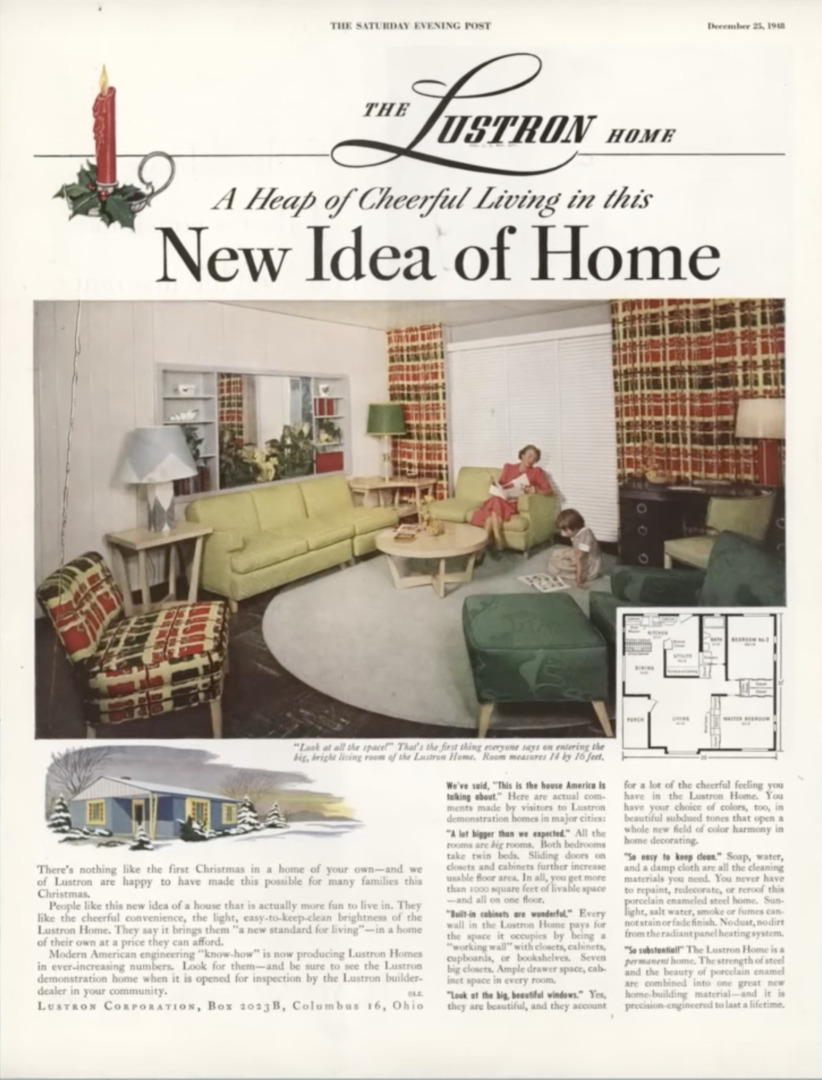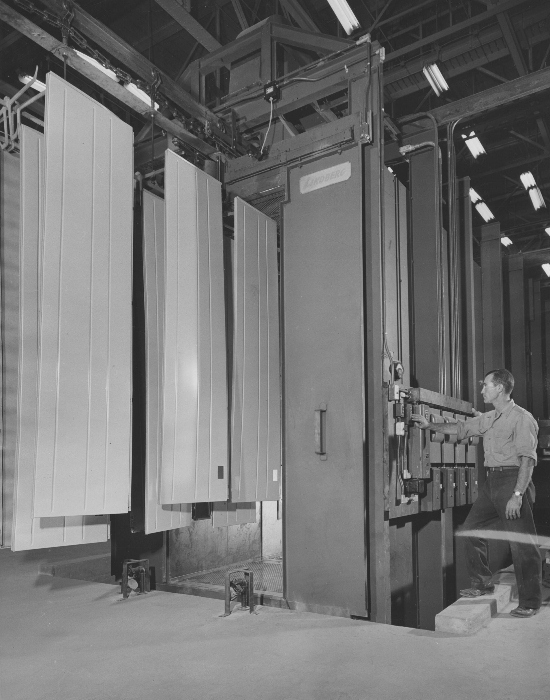
The home at 1022 Keystone in Cleveland Heights is a rather modest dwelling, with little now to distinguish it from its neighbors. But underneath the siding and some other modern improvements is a Lustron home, one of about 3,000 prefabricated enameled-steel houses that were built nationwide between 1948 and 1950. The remaining homes are generally cherished by their owners, and many consider it an honor to be part of the exclusive club of Lustron homeowners.
Any discussion of early postwar suburban housing is likely to turn quickly to the Levitt brothers, whose development company built tens of thousands of modest homes with near assembly-line precision. Less known but similarly important was the Lustron Corporation. A division of Chicago Vitreous Enamel Corporation, Lustron formed following World War II to provide relatively cheap, efficient, and, most important, quickly constructed housing to returning veterans, many of whom had promptly married the sweethearts they'd left behind and started families. The housing industry had been at a virtual standstill during the war, and now, in addition to a growing need for housing, the country found itself with an excess of steel when war production ceased. With Reconstruction Finance Corporation backing, the Lustron Corporation (the name derived from 'luster on steel') was created to solve both those problems.
There were four different models, all quite modest in size (713 to 1209 sq. ft. depending on the model chosen). In the more deluxe models, a specially developed radiant heating system was available with warm air flowing across the ceiling panels which then radiated heat into the room. All models came with an option to purchase a built-in combination Dish Washer - Clothes Washer produced by the Thor Corporation exclusively for Lustron homes (although these proved to be unreliable with need for frequent repairs).
Production problems and a scandal related to the government loans that had helped finance the company brought the Lustron company to bankruptcy by 1950, just two years after the first houses were built. Approximately 2,000 Lustron homes remain in 36 states, with a user-supported website to register and track the remaining houses. The remaining homes harken to a time when thousands of Americans looked to the suburbs as the embodiment of the American dream.
Images









